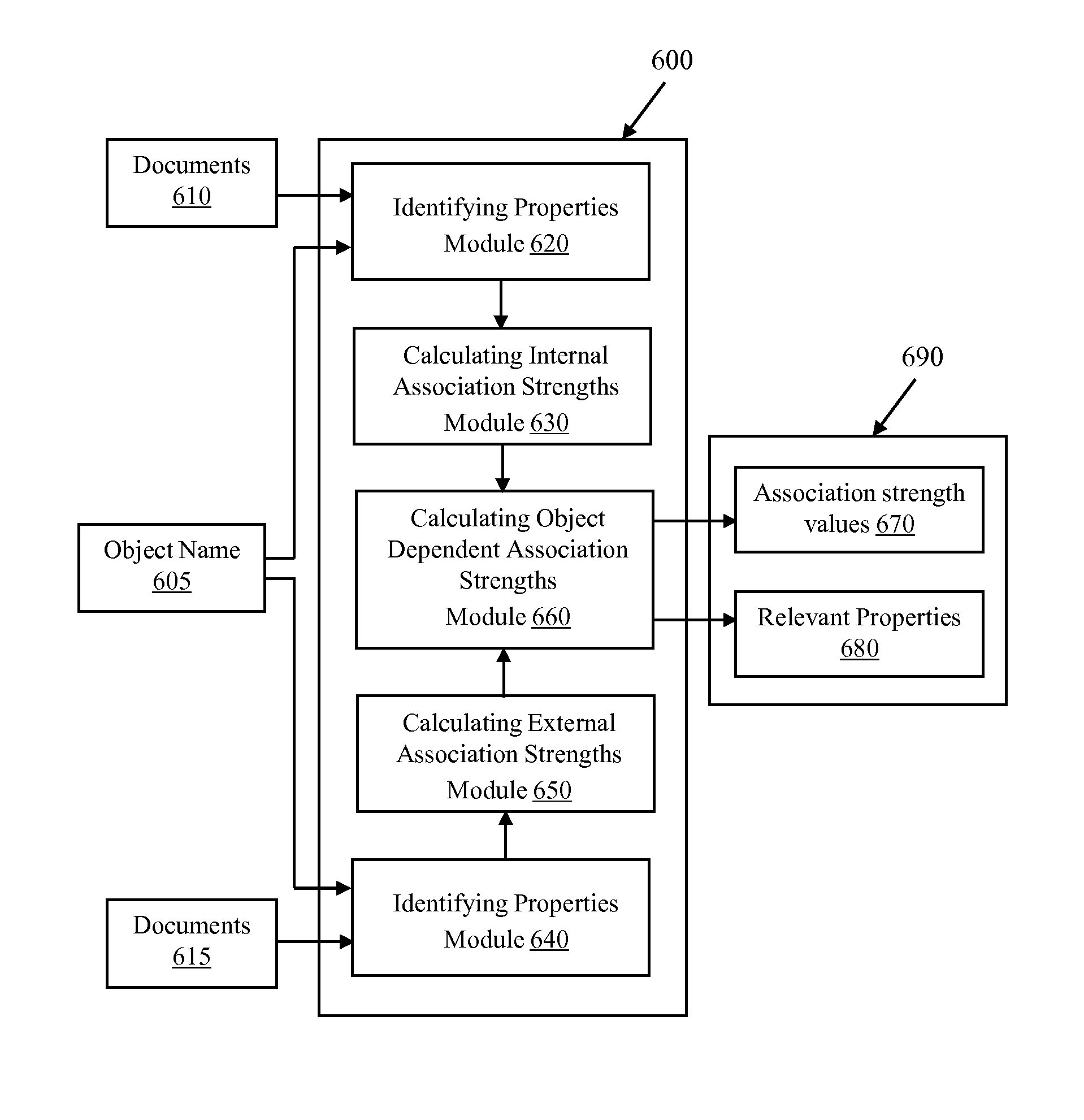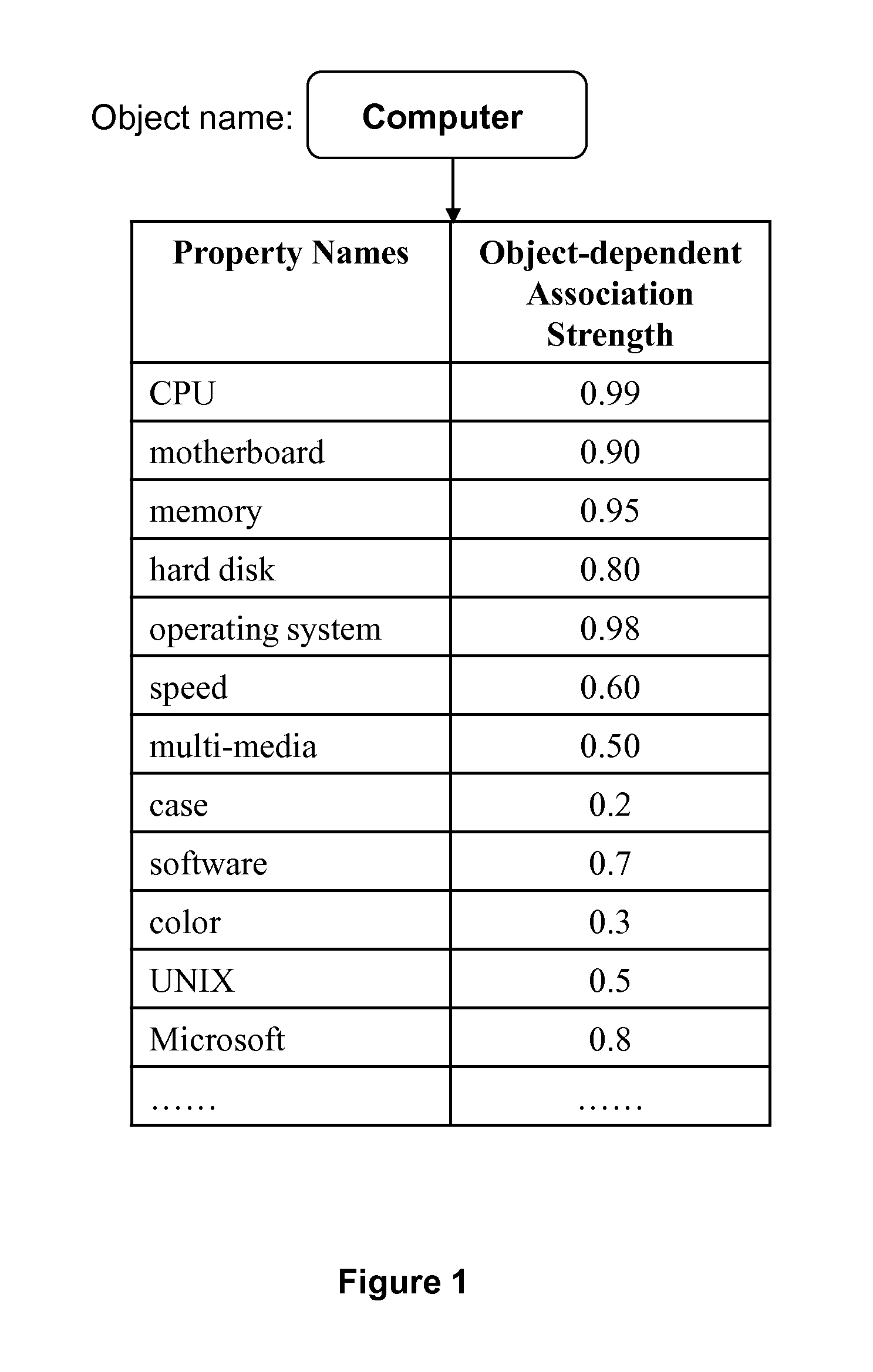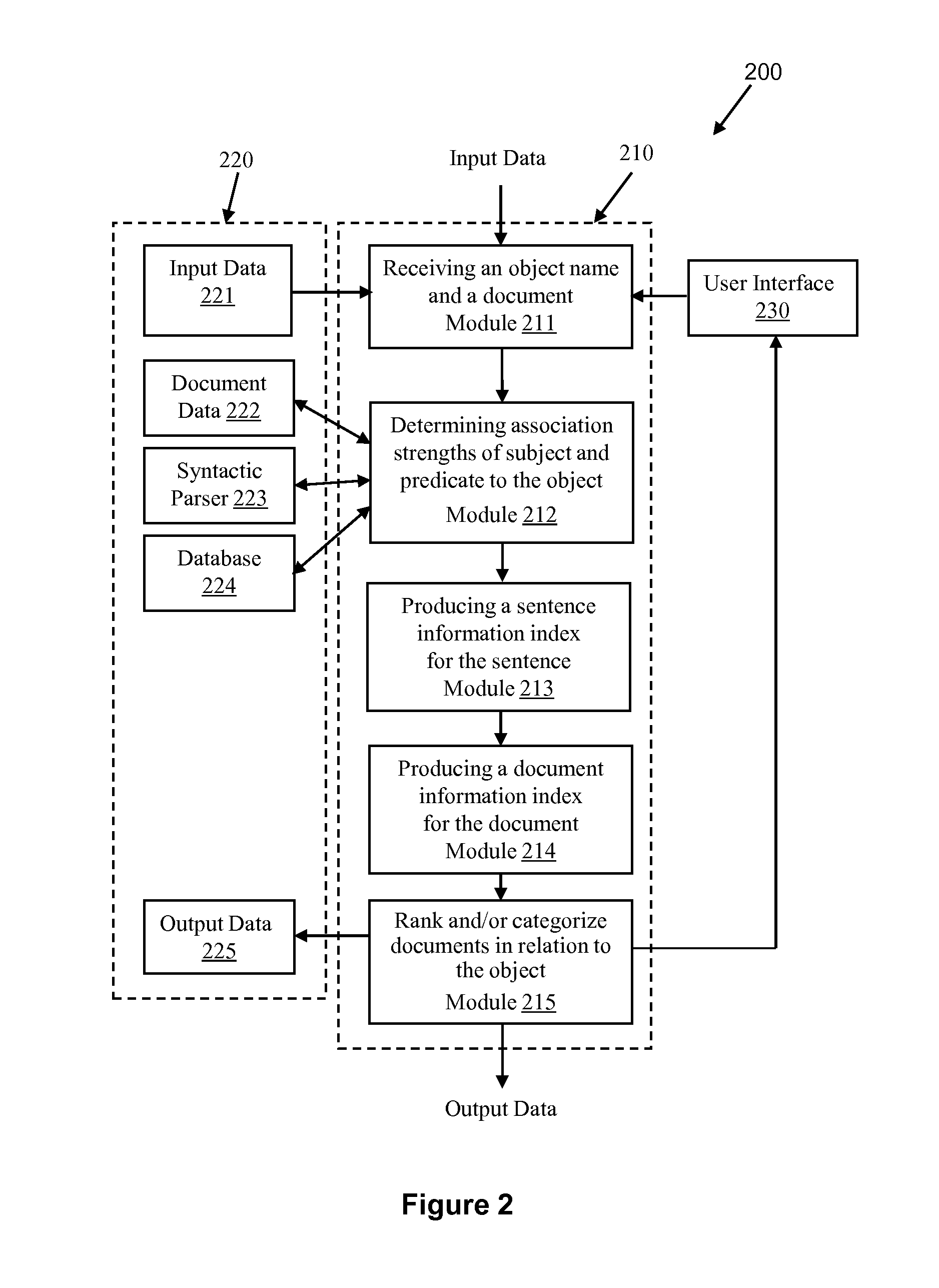System, methods, and data structure for quantitative assessment of symbolic associations
a symbolic association and quantitative assessment technology, applied in the field of information management, can solve the problems of insufficient identification accuracy and inability to effectively serve the information needs of users, and achieve the effects of improving the quality and efficiency of such systems, reducing computational and human labor costs, and increasing machine-learning accuracy in quantifying associations
- Summary
- Abstract
- Description
- Claims
- Application Information
AI Technical Summary
Benefits of technology
Problems solved by technology
Method used
Image
Examples
Embodiment Construction
[0032]Human knowledge, or aspects of human knowledge, can be represented in various ways. While internal knowledge representations are functions of human brains, external or artificial representations such as Frame Representation and Semantic Networks are simulation models for certain aspects of such internal knowledge.
[0033]The present invention is based on a novel model developed by the first inventor of the present invention for knowledge and linguistic information representation. The model, called Object Properties Association Model (OPAM), states that part of human knowledge is based on concepts about objects and their associated properties, or based on relationships between different objects. Certain objects are perceived as the properties of other objects. Certain objects are associated with other objects in ways that uniquely define the concepts of such other objects. Simply put, OPAM contends that an object can be uniquely defined by all its associated properties each of wh...
PUM
 Login to View More
Login to View More Abstract
Description
Claims
Application Information
 Login to View More
Login to View More - R&D
- Intellectual Property
- Life Sciences
- Materials
- Tech Scout
- Unparalleled Data Quality
- Higher Quality Content
- 60% Fewer Hallucinations
Browse by: Latest US Patents, China's latest patents, Technical Efficacy Thesaurus, Application Domain, Technology Topic, Popular Technical Reports.
© 2025 PatSnap. All rights reserved.Legal|Privacy policy|Modern Slavery Act Transparency Statement|Sitemap|About US| Contact US: help@patsnap.com



